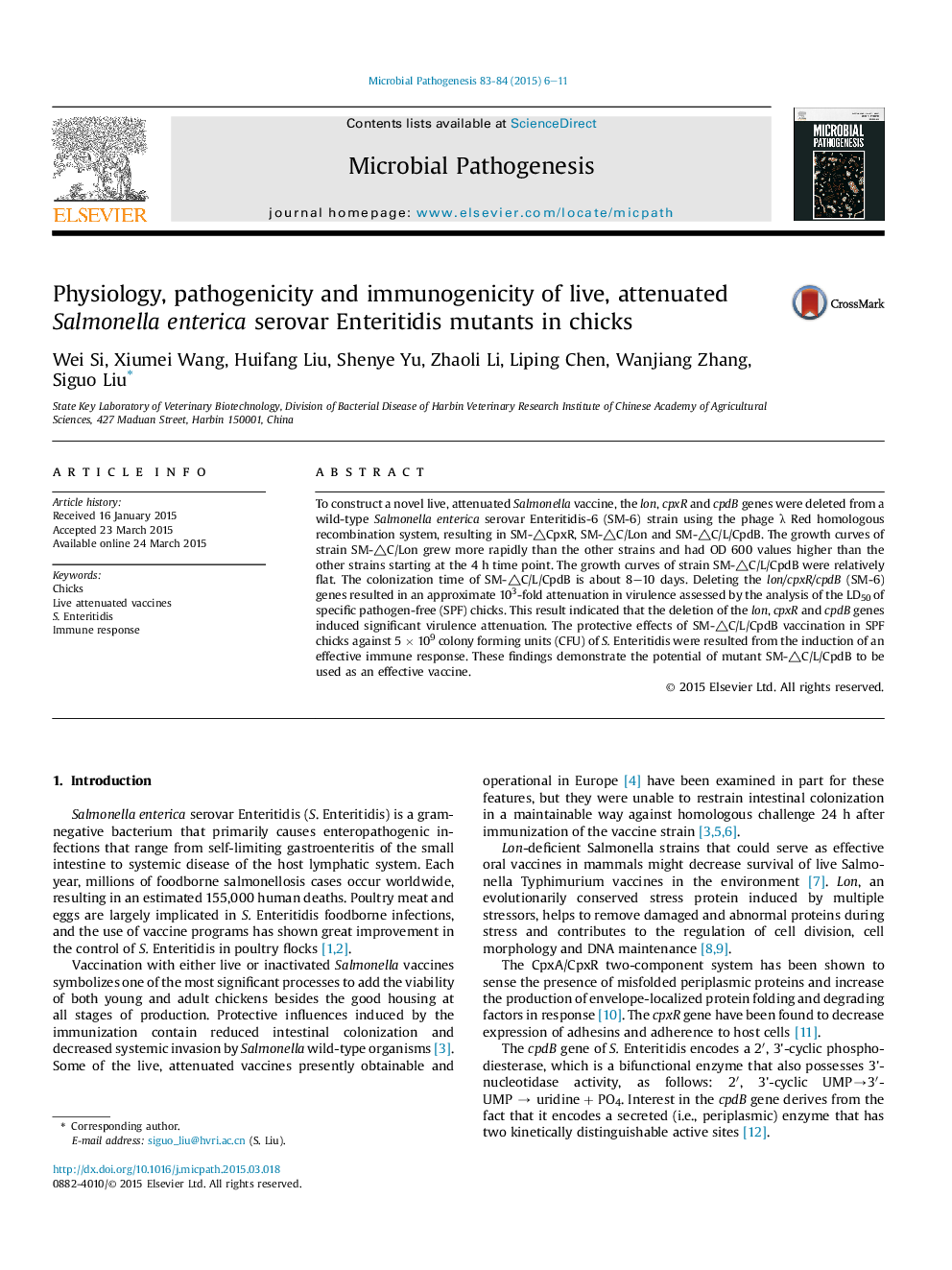| Article ID | Journal | Published Year | Pages | File Type |
|---|---|---|---|---|
| 3416477 | Microbial Pathogenesis | 2015 | 6 Pages |
To construct a novel live, attenuated Salmonella vaccine, the lon, cpxR and cpdB genes were deleted from a wild-type Salmonella enterica serovar Enteritidis-6 (SM-6) strain using the phage λ Red homologous recombination system, resulting in SM-△CpxR, SM-△C/Lon and SM-△C/L/CpdB. The growth curves of strain SM-△C/Lon grew more rapidly than the other strains and had OD 600 values higher than the other strains starting at the 4 h time point. The growth curves of strain SM-△C/L/CpdB were relatively flat. The colonization time of SM-△C/L/CpdB is about 8–10 days. Deleting the lon/cpxR/cpdB (SM-6) genes resulted in an approximate 103-fold attenuation in virulence assessed by the analysis of the LD50 of specific pathogen-free (SPF) chicks. This result indicated that the deletion of the lon, cpxR and cpdB genes induced significant virulence attenuation. The protective effects of SM-△C/L/CpdB vaccination in SPF chicks against 5 × 109 colony forming units (CFU) of S. Enteritidis were resulted from the induction of an effective immune response. These findings demonstrate the potential of mutant SM-△C/L/CpdB to be used as an effective vaccine.
